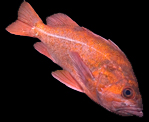
August 20, 2005
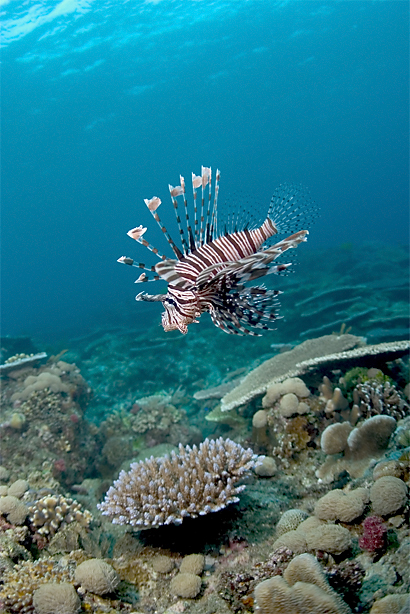
Lionfish (Pterois sp.) like this one are poor swimmers. For defense they
rely upon their large array of venomous spines rather than their speed. Once a
lionfish has been discovered, it's usually not difficult to get quite close to
it. However, obtaining a pretty photograph is a bit of a challenge since
lionfish usually stay quite close to some benthic structure and often turn their
tail (and thus the points of their spines) toward their observer. Patience and
careful body positioning may be required to get a shot that has a uniform
background that will nicely highlight the lionfish's complex silhouette.
"Wewak and Madang", Papua New Guinea
August 20, 2005
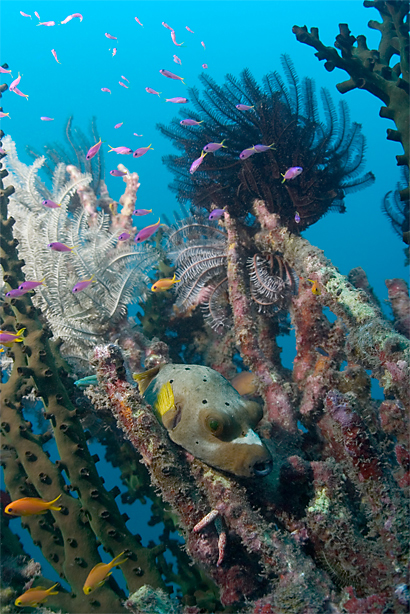
This blackspotted puffer (Arothron nigropunctatus) appears to have chosen
an odd perch. It may have been looking for a cleaning from some gobies that were
in the area. The feathery crinoids seen in the background are ubiquitous in New
Guinea and assume a vast range of colors. Crinoid arms can be quite sticky, and
clumsy divers may find their wetsuits decorated with one or more animals upon
returning to the boat.
"Wewak and Madang", Papua New Guinea
August 20, 2005
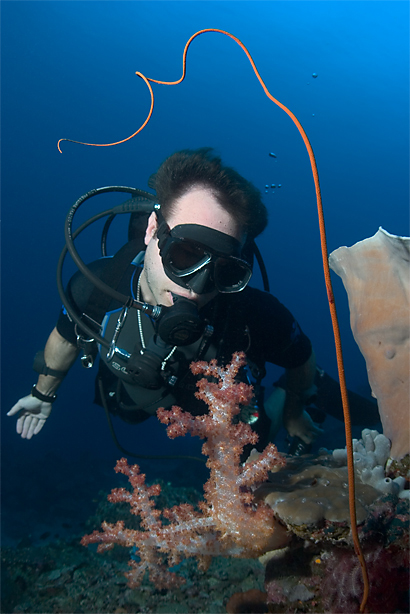
David Chamberlin looking at some invertebrates. If you look closely, you may be
able to see the goby resting the this sea whip. Not surprisingly, I didn't see
this little guy when the shot was taken.
"Wewak and Madang", Papua New Guinea
August 20, 2005
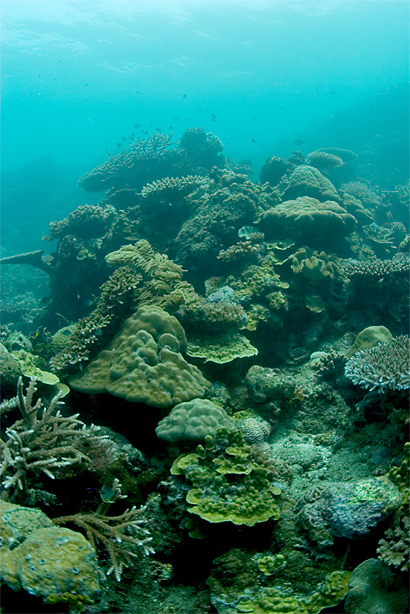
A collection of hard corals
"Wewak and Madang", Papua New Guinea
August 20, 2005







